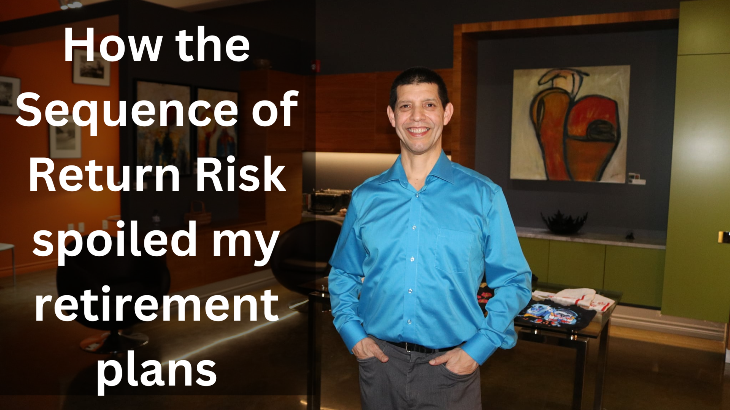At the end of 2021 I thought I had enough money to retire, and then the market collapsed. In six months the S&P 500 tumbled about 16%.
My retirement plans were scrapped.
Luckily for me, I like working and I just continued working so there was not a big change in life, but something that every person who is considering retirement should keep in mind, is the Sequence of Returns Risk.
Fortunately, the market seems to be recuperating and by the end of this year, or maybe mid of next year, I will have enough money (once again) to retire.
Once a person decide to retire, if the market goes down on that first year, there is a big risk that person will have to postpone those retirement plans.
However, if they first few years after retirement are positive and then then market goes down, that person is probably in good shape.
What Is Sequence Risk?
Sequence risk is the danger that the timing of withdrawals from a retirement account will have a negative impact on the overall rate of return available to the investor. This can have a significant impact on a retiree who depends on the income from a lifetime of investing and is no longer contributing new capital that could offset losses. Sequence risk is also called sequence-of-returns risk.
KEY TAKEAWAYS
- Timing is everything. Sequence risk is the danger that the timing of withdrawals from a retirement account will damage the investor’s overall return.
- Account withdrawals during a bear market are more costly than the same withdrawals in a bull market.
- A diversified portfolio can protect your savings against sequence risk.
Understanding Sequence Risk
Sequence risk has less of an impact on the safest retirement investments like government bonds, which generate predictable if unspectacular rates of return. It has a greater effect on any investment that can go up and down over time such as the stock market.
One of the basic rules of investing is that a long-term strategy is self-correcting. Keep investing a steady amount of money month after month and year after year and the average return should be solid.
When You Retire
But at some point, you retire. You are no longer contributing new money but you are withdrawing money on a regular basis. If you happen to be in a bull market, your withdrawals will be offset at least in part by new gains. If a bear market is in effect for months or years, each of your withdrawals is taking a bite out of the balance and is not being offset by new deposits. You’re taking the same amount of cash out of an account that is steadily shrinking in size.
Sequence risk is a matter of luck. But you can protect your account against sequence risk. And you can keep saving and investing even after you retire.
Sequence risk is, for the most part, a matter of luck. If you retire in a bull market, your account may grow large enough to sustain a subsequent downturn. If you retire in a bear market, your account balance may never recover, and you might have to return to the job market, or accept lower withdrawals for the remining life of your investments.
This is not under the investor’s control, but there are opportunities to limit the downside risks.
Protecting Against Sequence Risk
Protecting against sequence risk means anticipating a worst-case scenario. Don’t assume that a bull market will reign throughout your golden years.
- Consider working as late as you can in order to contribute more to your retirement account, particularly in your peak earning years.
- Keep saving and investing even after you retire. If you’re past age 71, you can’t continue contributing to your RRSP but you can contribute to a TFSA or to your non-registered account.
- Diversify your portfolio. I have been considering adding some real estate to my retirement portfolio.
